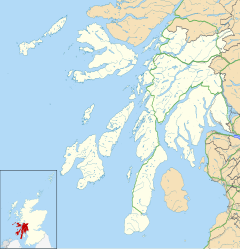Williamite-Jacobite wars
On 1 May 1689, Dartmouth, by now with an armament ofn36 guns, took part in the Battle of Bantry Bay, in which a fleet of 24 French war ships, covering the landing of equipment for Irish Jacobite forces in the south-west of Ireland, fought 19 English war ships. The French had the better of the battle, badly damaging the English ships, but failed to press their advantage. [9] [10]
Later that year, Dartmouth, commanded by Captain John Leake, participated in the relief of the Siege of Derry. The town of Derry, which lies on the River Foyle near its mouth on Lough Foyle, was besieged by supporters of James II of England and defended by northern Irish Protestants supporting King William.
In May and June 1689 Dartmouth escorted a convoy from England to Ireland that brought a relief force, commanded by Major-General Percy Kirke, destined for Derry. On 17 May 1689, the convoy sailed from Liverpool [11] with 24 transport ships, escorted by three men-of-war, HMS Swallow, HMS Bonaventure, and HMS Dartmouth. The fleet, carrying four battalions (about 2000 men), arrived in Lough Foyle early in June.
As the access to Derry from Lough Foyle by the river was defended by shore batteries and blocked by a boom across the river, Kirke did not dare use this route to approach the town. However, a desperate last-minute attempt succeeded on the 28 July. The Dartmouth engaged the shore batteries, while the armed merchant ship Mountjoy rammed and breached the boom. The Mountjoy and another armed merchant, the Phoenix, forced their way past the defences and relieved the siege.
In 1690, Dartmouth was employed in operations along the west coast of Scotland against Jacobite rebels. On 9 October, Dartmouth and two other smaller ships were sent to persuade the MacLeans of Duart to sign Articles of Allegiance to William III and Mary II. They encountered a heavy storm whilst in the Sound of Mull, and anchored to ride out the poor weather. Dartmouth was driven onto rocks and wrecked, with the loss of most of her crew, including her commanding officer, Edward Pottinger. [13] [14]


